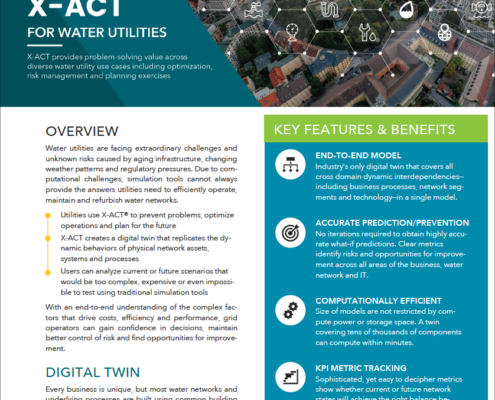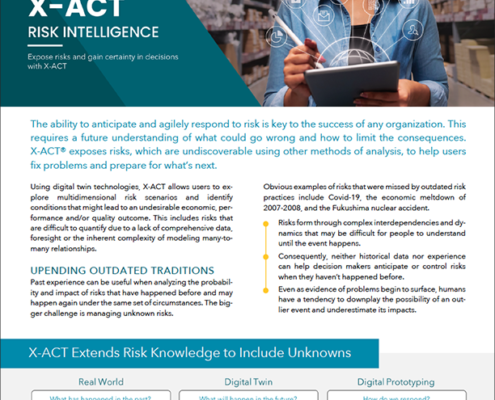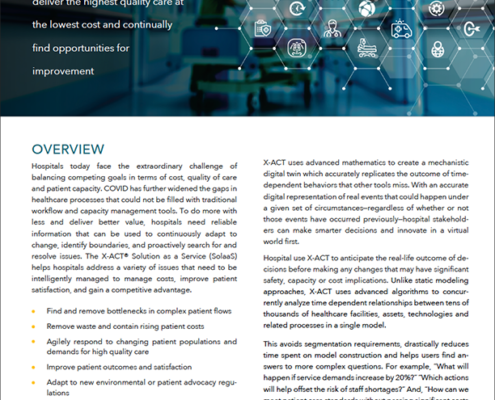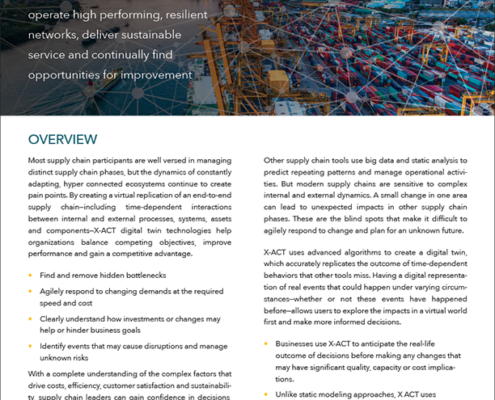The Value of Digital Twin Technology
Interest in digital twin technology is surging as use cases demonstrate its problem-solving value across diverse applications including operations, manufacturing, supply chains, utilities and enterprise management.
A digital twin is commonly defined as a software representation of a physical asset, system or process designed to detect, prevent, predict and optimize the system being studied through real time analytics. Using the algorithmic capabilities of X-ACT, we extend the definition of digital twin to cover the replication of process dynamics. This means the digital twin created by X-ACT covers time dependent behaviors for complex relationships.

Gain Confidence in Decisions and Control Risks
Digital twins let users understand the present and predict the future. Many industries are applying these capabilities to gain confidence in decisions, maintain better control of risk or find opportunities for improvement. A virtual model can span the full lifecycle of any asset or process, product or service and provides an easy way to build and validate new projects or planned changes.
Once it has been verified that the digital twin produces the same results as the target physical asset, the model can be used to determine what is happening or what could happen in the future. This information is gained within minutes by testing a full range of scenarios—including events that would be difficult, costly or even impossible to test in the real world.
Through stress testing and sensitivity analysis users can quickly identify any conditions that might cause a physical asset to deviate from its expected behavior or find the root cause of problems. As risks are revealed, fixes or controls can be identified using the digital twin and implemented when needed. Users can also gain confidence in decisions and see how different choices playout under various conditions.
For example, a business that wants to move critical applications to the cloud can use a digital twin to see what would happen if transaction volumes unexpectedly double. Or a retailer might use a digital twin to analyze the fallout of a multi-day shutdown of a supplier’s manufacturing plant. A car manufacturer could use a digital twin to help answer, “What will be the realistic cost benefits and performance improvements gained by automating or digitalizing our processes?”
No matter the problem, the information gained from digital twins allow organizations to learn and make decisions faster with more certainty in the outcome. The speed and agility enabled by digital twin technologies is expected to become increasingly important as the complexity and pace of business continues to accelerate.





